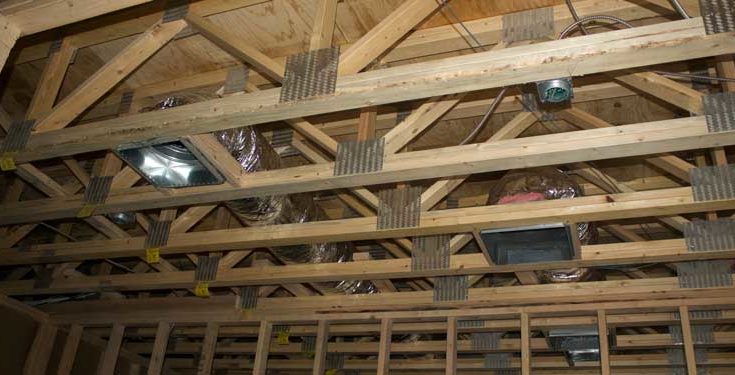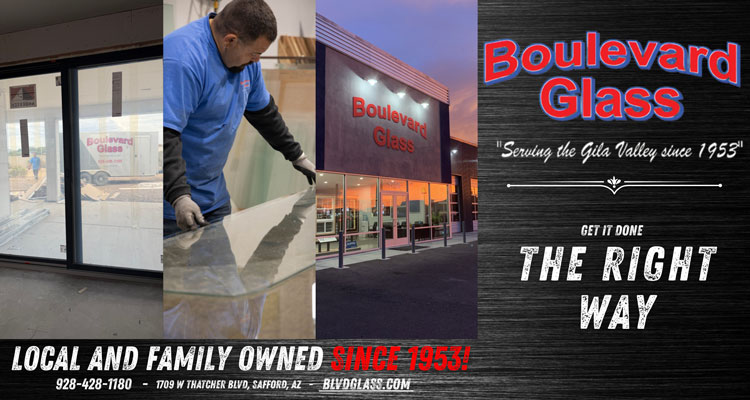Managing industrial property isn’t for the faint of heart. Between juggling regulatory compliance, maintaining aging infrastructure, and keeping operations running smoothly, you’re balancing priorities that all seem urgent simultaneously. Yet some systems simply can’t be ignored or postponed until next quarter’s budget cycle.
The infrastructure supporting your industrial property determines everything from insurance premiums to tenant satisfaction to your facility’s market value. While it’s tempting to view these systems as background concerns, the reality is that perimeter security, fire safety, and drainage management form the operational backbone of any successful industrial facility. When these systems fail, they don’t do so quietly.
Securing Your Property Perimeter
Physical security remains non-negotiable for industrial properties, regardless of how sophisticated your digital surveillance systems might be. Perimeter barriers serve multiple functions beyond the obvious deterrent value. They define property boundaries, control access points, reduce liability exposure, and signal to potential intruders that your facility takes security seriously.
The layered security approach works best for most industrial sites. This means combining permanent fencing with temporary solutions during construction phases or when securing unutilized sections of larger properties. Construction projects create particular vulnerabilities, and that’s where enhanced temporary barriers earn their keep. Solutions like heras fencing covers transform standard temporary fencing into more robust security elements by adding visual screening as well as being a branding and marketing opportunities.
Your insurance carrier pays attention to perimeter security. Properties with documented security measures often qualify for lower premiums, and the savings compound annually. But there’s another consideration that property owners sometimes overlook: psychological impact on your workforce. Employees who feel unsafe don’t perform optimally, and visible security measures contribute to that sense of protection.
The OSHA guidelines on workplace security emphasize that physical barriers form part of a comprehensive security strategy, though they’re careful not to prescribe specific solutions for every scenario. Your property’s security needs depend on what you’re storing, your location’s crime statistics, and whether you operate around the clock or maintain limited hours.
Fire Safety Systems That Meet Today’s Standards
Fire safety codes aren’t suggestions. They’re minimum requirements backed by decades of tragedy and hard-learned lessons. For industrial property owners, the stakes include not just regulatory compliance but genuine life-safety considerations and potentially catastrophic financial losses.
The fire alarm system architecture you choose matters more than many property owners realize. Different industrial operations demand different detection strategies. Commercial conventional fire alarm systems remain widely implemented in industrial settings because they divide facilities into zones, making it easier to identify fire locations quickly. When an alarm triggers in Zone 3, your response team knows exactly which section of the warehouse to check first. That’s not a trivial advantage when seconds matter.
But having the right system installed is only the beginning. Testing schedules, maintenance logs, and inspection documentation form the paper trail that proves you’re meeting your duty of care. The NFPA 72 National Fire Alarm and Signaling Code specifies testing frequencies that seem onerous until you consider the alternative. System failures during actual emergencies make for uncomfortable conversations with investigators and plaintiff attorneys.
Fire safety intersects with broader workplace culture in ways that extend beyond alarm systems. When employees trust that safety systems work reliably, it reinforces the message that management prioritizes their well-being. That trust translates into better safety compliance across all operational areas, creating a positive feedback loop that benefits the entire organization.
Non-compliance costs scale quickly. Beyond the obvious fines, you’re looking at potential operational shutdowns, insurance policy cancellations, and liability exposure that can threaten the property’s financial viability. Some property owners gamble on inspection timing. That’s a losing strategy with consequences that outlast your ownership tenure.
Water Management and Drainage Infrastructure
Drainage systems occupy the unglamorous corner of industrial property management. Nobody gets excited about stormwater infrastructure until it fails spectacularly. By then, you’re dealing with flooded loading docks, contaminated runoff violations, and structural damage that exceeds your emergency maintenance budget.
Industrial properties face drainage challenges that residential and light commercial sites never encounter. The sheer square footage of impervious surfaces—parking lots, warehouse roofs, concrete pads—concentrates water in ways that overwhelm undersized drainage systems. Add chemical exposure risks and environmental regulations into the equation, and you’ve got a system that demands more attention than it typically receives.
Drainage system optimization goes beyond reactive maintenance and French drain installations. It’s a strategic approach that evaluates flow patterns, identifies bottlenecks, and implements improvements that enhance efficiency while ensuring environmental compliance. The EPA’s stormwater regulations for industrial facilities aren’t lenient, and violations carry penalties that sting.
Warning signs of drainage system failure appear long before catastrophic flooding. Persistent puddles in parking areas, soil erosion near downspouts, and water staining on exterior walls all indicate problems that are cheaper to address proactively. Yet property owners consistently postpone drainage improvements in favor of more visible upgrades.
The cost differential between preventive and reactive drainage management is almost comical if it weren’t so expensive. A scheduled drainage assessment and targeted improvements might cost $15,000. Emergency repairs after a major flood event? Try six figures, plus operational downtime and potential environmental remediation costs.
The Economics of Infrastructure Investment
Every dollar allocated to infrastructure improvements competes with every other operational priority. Should you upgrade the fire alarm system or repave the parking lot? Replace aging HVAC equipment or address drainage deficiencies? These aren’t theoretical questions. They’re the budget battles that industrial property owners navigate quarterly.
Deferred maintenance follows a predictable trajectory. That minor issue you postpone this year becomes a moderate problem next year and a crisis the year after. The compounding effect punishes procrastination, with repair costs escalating faster than inflation while system performance deteriorates simultaneously.
Certain infrastructure systems demand immediate attention based on life-safety implications and regulatory requirements. Fire suppression systems, emergency lighting, and structural integrity issues don’t wait for convenient budget cycles. Other improvements can be scheduled strategically during planned downtime or phased across multiple fiscal periods.
Return on investment calculations for infrastructure spending require longer time horizons than most business decisions. You’re not evaluating quarterly returns but rather how investments affect property value, operational costs, and risk exposure over five to ten years. Well-maintained infrastructure systems attract quality tenants who pay premium rents and stay longer. They reduce insurance costs, minimize emergency repair expenses, and enhance property valuations when you’re ready to sell.
Regulatory Compliance and Risk Management
The regulatory environment surrounding industrial properties resembles a maze designed by competing bureaucracies with overlapping jurisdictions. OSHA governs workplace safety. Local fire marshals enforce fire codes. The EPA monitors environmental compliance. State agencies add their own requirements. Navigating this landscape without qualified counsel and experienced facility managers is asking for trouble.
Compliance failures create cascading risks that extend beyond initial penalties. Insurance carriers review violation histories when underwriting policies and setting premiums. Serious violations can trigger policy cancellations at renewal, leaving you scrambling for coverage in the surplus lines market at multiples of your previous costs. Lenders notice compliance issues during refinancing, potentially affecting loan terms or approval.
Documentation protects you when questions arise. Maintenance logs, inspection reports, testing certifications, and training records demonstrate that you’re exercising reasonable care in managing your facility. This paper trail becomes crucial evidence if accidents occur or regulatory investigations commence. The OSHA recordkeeping requirements specify exactly what documentation you need to maintain and for how long.
Third-party inspections and certifications provide valuable verification that your systems meet applicable standards. These independent assessments carry more weight with regulators, insurers, and potential litigants than internal checklists alone. The upfront cost of professional inspections is negligible compared to the liability protection they provide.
Preventive Maintenance Strategies
Reactive maintenance cultures perpetuate themselves through crisis management and depleted budgets. Equipment runs until it fails, triggering emergency repairs that cost three times the scheduled maintenance while disrupting operations. Preventive maintenance requires upfront commitment but delivers compounding benefits that improve over time.
Different systems demand different maintenance frequencies. Fire alarm systems need quarterly testing. HVAC equipment requires seasonal servicing. Drainage infrastructure benefits from annual inspections and bi-annual cleaning. Developing comprehensive maintenance schedules across all systems takes effort initially, but becomes routine once established.
The internal staff versus contractor decision depends on system complexity and your team’s capabilities. Basic maintenance tasks like filter changes and visual inspections can be handled internally. Specialized systems requiring technical expertise and diagnostic equipment necessitate contractor relationships. The key is knowing which is which and not pretending in-house staff can manage everything.
Modern property management software has transformed maintenance tracking from clipboard chaos to systematic oversight. Digital platforms schedule recurring tasks, document completion, store inspection reports, and generate compliance summaries automatically. The efficiency gains justify subscription costs while improving consistency and accountability.
Seasonal considerations loom large for industrial properties. Preparing drainage systems before the spring thaw, servicing HVAC before the summer heat, and winterizing exposed piping all require advance planning. Extreme weather events that seemed rare are occurring with increasing frequency, making resilience planning essential rather than optional.
The infrastructure supporting your industrial property operates mostly invisibly until something breaks. By then, you’re managing consequences rather than preventing problems. Strategic investment in critical systems, consistent maintenance protocols, and genuine commitment to regulatory compliance separate successful industrial property operations from those constantly fighting fires—sometimes literally.











